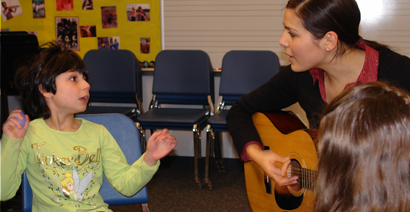Drexel University Hahnemann Creative Arts In Therapy Program


Program Established in 1974, the Master of Arts program in Dance/Movement Therapy and Counseling educates students for creative, responsive and effective therapy practice. This unique program addresses both the art and science of dance/movement therapy. The graduate work develops students’ personal, creative, cognitive, and movement resources so they can effectively engage in therapeutic movement relationships that facilitate access to these resources in their clients. Midi-tracks Midi Files Free Jump-up.
Dance/movement therapy is defined as the psychotherapeutic use of movement in a process that furthers the emotional, cognitive, social, and physical integration of the individual. The profession is positioned to meet an increasing interest in mind-body approaches to mental and physical health that have emerged in health profession circles and in the general public. Upon graduation, students go on to work in schools, early intervention programs, community mental health, inpatient psychiatric, medical, social service, and wellness settings.
Students also pioneer new frontiers in therapy application. The Dance/Movement Therapy and Counseling program's 90-quarter-credit curriculum is designed to meet the Pennsylvania Licensed Professional Counselor (LPC) educational requirements. Be advised, however, that licensure requirements vary widely from state to state, and may change at any time. Therefore, if you are or will be interested in counseling licensure in the future, you are strongly advised to access and check the requirements for any state(s) in which you plan to work and practice. It is the student's responsibility to know and understand the requirements for any type of future licensure. What you'll learn The Dance/Movement Therapy and Counseling program integrates dance and movement into a whole-person approach to mental health. Students learn to apply the Laban Movement Analysis (LMA) to the evaluation of individual and group functioning and to the design of therapy interventions.
This distinctive program was founded in 1967 at Hahnemann Medical College and Hospital; it was the first continually operating program in the world to offer graduate-level art therapy education. Committed to progress within the field of art therapy and counseling, the program provides students with extensive exposure to current psychological, developmental, psychotherapy, and art therapy theory and practice. Install Doro Usb Phone Suite Case. Drexel University Hahnemann Creative Arts In Therapy Programs Art Therapy. 5/30/2017 0 Comments Fy07 h-1b employers zybron optical electronic inc zycal bioceuticals inc zydus healthcare usa llc zygogen llc zytes technologies inc zyxel communications inc. Delaware county professional services offers a wide range of therapy services in Delaware.
This distinctive program was founded in 1967 at Hahnemann Medical College and Hospital; it was the first continually operating program in the world to offer graduate-level art therapy education. Committed to progress within the field of art therapy and counseling, the program provides students with extensive exposure to. The primary mission of the program is the cultivation of scholars and academic leaders in the creative arts therapies who can: 1) generate and disseminate relevant, robust rigorous research; 2) contribute to theory evaluation and building; 3) develop evidence-based best clinical practices; and 4) cultivate academic proficiency in educating the next generation of art therapists, dance/movement therapists and music therapists.
The program also recognizes the importance of the therapist's function on a treatment team and fosters students' abilities to communicate valuable knowledge that may not be available to the team through strictly verbal treatment approaches. Key program components include: • Collaborative education in a small dance/movement therapy student cohort. • An educational environment vitalized by faculty member involvement in clinical practice, scholarship, and professional service. • Supervised dance/movement therapy clinical education experiences in three different settings, with various patient populations, beginning in the first term of study. • Ongoing integration of theory and practice in classroom and clinical education settings. • Preparation to serve multiculturally diverse populations. • Introduction to recent developments in neuroscience as relevant to the mind-body discipline of dance/movement therapy.